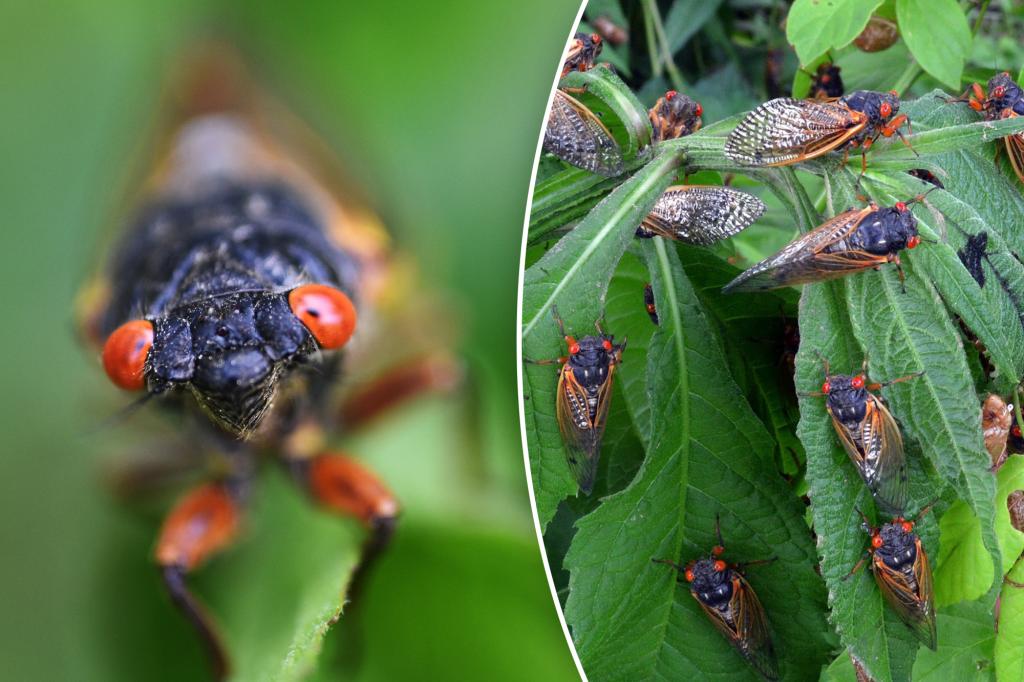They’re buggin’ out.
After lying dormant for nearly two decades, billions of sex-crazed cicadas will be emerging from their subterranean sleep pods hungry for love. However, this year, many will be extra horny thanks to the spread of a creepy, “The Last Of Us”-esque zombie fungus.
“Nature is stranger than any science fiction that’s ever been written,” said John Cooley, an evolutionary biologist at the University of Connecticut, told the Scientific American while describing the phenomenon.
Trees across the US have already been abuzz with the hornball bugs’ siren-esque chirps after the Brood XIV class surfaced for the first time since 2008, USA Today reported.
The red-eyed insects are the second largest of the periodical cicadas, a version that hunkers down underground for years — 17 in the case of Brood XIC — as nymphs, feeding on tree sap, before surfacing when the ground temp hits the requisite 64 degrees Fahrenheit.
These cyclical critters are expected to break ground in 13 states this year, including New York, according to Gene Kritsky, an entomologist at Mount St. Joseph University in Cincinnati, Ohio.
The love bugs’ goal is to find a mate and procreate in the four to six weeks they spend above ground before dying off, the Daily Mail reported. After copulating, the female deposits eggs so that her offspring can repeat the cycle when they emerge in the year 2042.
In fact, their earsplitting siren sound, which is so loud it has prompted police calls, is actually a mating song that’s used to attract prospective partners.
Unfortunately, for many cicadas, possibly millions, mating will be especially intense due to a genital-destroying fungi called Massospora cicadina that ramps up their sex drive and turns them into “zombies” — like those described in HBO’s sci-fi horror series “Last of Us”
Affecting both 13-year and 17-year cicadas, the spores replace the insect’s genitalia with a plug of fungus.
After hijacking the host’s system, it then urges the zombified cicada to flick its wings like an amorous female would. When healthy males try to mate with the imposters, they become infected and spread the fungus like an STD.
In other words, they’re spreading a bug.
“By doing so, they can infect males and females alike … and they are tricked into doing so as much as they can for as long as they can before they ultimately succumb to the fungus and die,” Smithsonian Entomologist and Collections Manager Floyd Shockley previously told the Washington Times.
“It’s sex, drugs and zombies,” quipped Cooley while describing this carnal cordycep phenomenon, which begins underground while the bugs are still nymphs.
Fortunately, we have nothing to fear from cicadas, zombified or otherwise.
“They are harmless, they don’t bite or sting,” Senior Research Scientist and cicada expert Dr. Chris Simon of UConn wrote to DailyMail.com.
However, cicadas are known to “pee” on people as a defense mechanism and they can be dangerous to young trees, however, as they lay their eggs in small tree branches, according to the Environmental Protection Agency.
The agency advises covering maturing saplings in mesh or netting to keep the insects out.
Read the full article here

